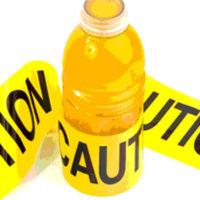From production to distribution, the complex crop-to-table food supply chain is fraught with risk, as demonstrated by recent outbreaks of food-related diseases such as bovine spongiform encephalopathy-infected beef, Listeria and Salmonella.
Representatives from Danone, a French food products corporation, and WalMart summarized the challenges facing the food industry at the Global Food Safety Initiative (GFSI) 2012 conference on “Advancing Global Food Safety through Collaboration.” Frank Yiannas, vice president of food safety at WalMart, said, “In a changing food delivery system, food production, processing, distribution, retail, foodservice and transportation all have a shared responsibility to provide safe food.”
Yves Rey, quality general manager at Danone, added, “Today’s consumer not only expects value for money but also demands that companies act responsibly towards the community. Each time there is a food safety incident, besides the human tragedy, there is a loss of confidence in our food supply.”
All food organizations, retail conglomerations and regulatory agencies look to food testing laboratories to ensure that biological and chemical components of foods are safe for consumers. But are all food testing laboratories created equal?
The short answer is no. Certainly, food testing laboratories are required to meet ISO/IEC standard 17025:2005, General requirements for the competence of testing and calibration laboratories. However, the devil is in the details. In the case of food testing laboratories, best practices dictate that a third party assess the competency of the testing lab and its compliance with the relevant standards—and that’s where accreditation bodies (ABs) come into play.
The ABCs of ABs
ABs are responsible for ensuring compliance with standards, examining the competence of laboratory staff, verifying accredited scopes of testing/calibration and monitoring effectiveness of laboratory quality management systems. Third-party ABs can accredit certification bodies, inspection agencies, calibration/testing laboratories and other conformity assessment bodies. They are required to operate in accordance with ISO/IEC 1701, General requirements for accreditation bodies accrediting conformity assessment bodies. In general, an accredited certification body primarily provides certification to a quality management system (e.g., ISO 9001, ISO 14001, ISO 22000, etc.), whereas an accredited testing/calibration facility provides an accurate statement of measurement usually in a test report or calibration certificate. The U.S. Food and Drug Administration (FDA) has concluded that certification bodies should have access to competent laboratory services needed to support their food safety audit program functions. These laboratories should conform to ISO/IEC 17025:2005.
As not all testing/calibration laboratories perform the same work or have similar capabilities, accreditation can help identify and qualify those that are competent to perform a defined scope of work. Further, accreditation requires traceability to the SI units of measurement undertaken by the laboratory, providing a high degree of reliability to its measurements. Accreditation is a formal, independent process that ensures laboratories meet established management, quality and technical standards and are competent to perform the services for customers and stakeholders within their recognized scope of accreditation.
Food testing laboratories depend on ABs to perform thorough assessments and to provide timely feedback for improvements based on the AB’s findings. For instance, Melissa Calicchia, owner of Food Microbiological Laboratories, based in Cypress, CA, is a State of California (ELAP) and ISO/IEC 17025 microbiological food testing laboratory accredited by International Accreditation Service Inc. (IAS), based in Whittier, CA. Calicchia says, “I chose to earn accreditation because it demonstrates that our lab operates to a global standard with rigorous examination of methods, facilities and staff.”
Analytica Alimentaria GMBH, an independent laboratory also accredited under IAS with laboratories in Germany and Spain, specializes in the analysis of pesticide residues and other potential food contaminants. Udo Lampe, general manager for Analytica Alimentaria, adds, “Accreditation by a neutral and technically capable organization is the only way to confirm that our laboratory meets the technical requirements for testing and that we fulfill our own quality
system.”
Standards of Evaluation
The process of becoming accredited and maintaining accreditation involves ongoing technical and quality assessments of a laboratory’s equipment, personnel qualifications and methods/procedures used for performing calibration/testing and can vary from country to country. In the U.S., for example, expanding regulatory oversight will dictate advances in these standards (see “Anticipated Regulatory Changes Push for Accreditation Standards”).
Accreditation in the U.S. is complex and highly sector specific. As a result, the U.S. has multiple ABs, some of which specialize to serve certain industries. When selecting an accredited calibration or testing laboratory to test your products or calibrate your equipment, make sure that the AB is a signatory member of the International Laboratory Accreditation Cooperation (ILAC) Mutual Recognition Arrangement (MRA). ILAC is a globally recognized international cooperation of laboratory and inspection ABs. These member ABs participate in a rigorous peer evaluation process based on a common standard (ISO/IEC 17011) to ensure that each signatory maintains competence to provide accreditation services. The result of this MRA is that the reports of laboratories accredited by an ILAC-recognized AB are accepted by governments and industries worldwide. Jesse Lamas Calvillo, laboratory manager for AGQ Labs, Spain, says, “International accreditation not only assures the quality of data being emitted to our clients from our laboratory, but benefits the company by guaranteeing uniformity of standards across the board on the world stage. AGQ has seven laboratories throughout the world, which allow us to operate in over 20 countries, and ISO/IEC 17025 accreditation has been critical within every one of those food safety markets. Beyond the more apparent benefits of having an internationally recognized accreditation, being on the same playing field as national agrifood laboratories in Europe and abroad heightens our profile and lends credibility any time we have to represent our clients in a dispute.”
Governmental regulatory agencies such as the Consumer Product Safety Commission, the U.S. Environmental Protection Agency and the Nuclear Regulatory Commission require accreditation to verify the technical competence of organizations like laboratories, inspection bodies and/or certification agencies.
Laboratories seeking accreditation from an ILAC member organization must demonstrate that their testing and calibration methods are conducted in accordance with internationally recognized standards, and within the framework of ISO/IEC 17025, General requirements for the competence of testing and calibration laboratories.
Systematic Assessment
The first step in the accreditation process is for the laboratory to submit quality management system documentation to the AB, describing its management and technical procedures for compliance with ISO/IEC 17025. The documentation comprises the laboratory’s quality system manual, details on the laboratory’s equipment, a proposed scope of accreditation, list of test methodologies and procedures, and capabilities for establishing and estimating measurement uncertainty for the testing to be performed.
After reviewing this documentation, the AB conducts an on-site assessment using a team of quality system and technical experts matched to the laboratory’s scope to confirm compliance with the standard. For instance, a food laboratory may propose a scope of accreditation that includes biological testing for Salmonella using the FDA-Bacteriological Analytical Manual, which outlines procedures for the detection of pathogens such as Salmonella in food products. Another example could be the use of a regulatory method like U.S. Department of Agriculture (USDA)-Microbiology Laboratory Guidebook (MLG) for the microbiological analysis of meat, poultry and egg products.
Competency of the laboratory staff to perform the intended work and ongoing training is another critical area reviewed by the AB.
Dr. Sri Ghanthan, a veteran IAS assessor, says, “Certainly the primary focus of the assessment team is to identify nonconformances. However, they might also look for ways to share knowledge about industry best practices. In the food safety business, it’s not enough to just meet the standard[s]. Accreditation bodies must also see evidence of a laboratory’s commitment to continuous improvement of its processes, people and tools as well as evidence of preventive actions to proactively address potential problem areas. That means looking at the testing processes, interviewing people, determining equipment capabilities and even the way samples are received, identified and stored. The goal of continuous improvement is to improve long-term efficiency and accuracy.”
Food Microbiological Laboratories’ Calicchia recalls, “During our on-site assessment, the evaluators recommended that we chronicle our improvement projects as well as improvements to methodologies, systems, facilities, communications and personnel. The documentation would help us recognize where we focused our energies most. For instance, if we focused more on improving methodologies, but very little on facilities, we might have missed some opportunities. The documentation would help us identify gaps where there might be inconsistencies.”
.jpg) Once a testing laboratory has demonstrated technical competence and compliance with the accreditation criteria, it is granted a Certificate of Accreditation—CA—(Figure 1). The certificate, which includes a scope that describes the laboratory’s technical capabilities, is given to the laboratory and a copy is placed on the AB’s website. The CA also is made available to consumers, potential customers, stakeholders and regulatory bodies.
Once a testing laboratory has demonstrated technical competence and compliance with the accreditation criteria, it is granted a Certificate of Accreditation—CA—(Figure 1). The certificate, which includes a scope that describes the laboratory’s technical capabilities, is given to the laboratory and a copy is placed on the AB’s website. The CA also is made available to consumers, potential customers, stakeholders and regulatory bodies.
Reading Between the Lines
When an AB issues a CA to a laboratory, it will include the name and contact information for the laboratory, the standard (ISO/IEC 17025) used for the accreditation and the scope of the accreditation.
Keep in mind, ISO/IEC 17025 is a generic standard used to accredit laboratories in many different fields, ranging from biological testing (food testing) to electrical testing (fiber optics) and other technical disciplines. It is important to review the details in a laboratory’s CA before contracting with the laboratory for its services. The scope will list the details of the laboratory’s qualifications under the accreditation.
Just because a laboratory is accredited to ISO/IEC 17025 doesn’t mean it is qualified to perform Listeria testing as per the USDA-MLG. The ability of the laboratory to perform the relevant testing must be listed on its scope of accreditation.
A review of the laboratory’s CA and scope will help customers select appropriate laboratories to perform the required tests and/or calibrations.
 Mohan Sabaratnam is quality manager with International Accreditation Service Inc. (IAS). He has been involved in the development and operation of laboratory accreditation programs for the last 16 years and currently manages the IAS food safety management system accreditation program.
Mohan Sabaratnam is quality manager with International Accreditation Service Inc. (IAS). He has been involved in the development and operation of laboratory accreditation programs for the last 16 years and currently manages the IAS food safety management system accreditation program.
 Pat McCullen is vice president and chief technical officer and is responsible for overseeing technical activities for IAS. He has over 30 years of experience in laboratory testing, inspection, product certification and conformity assessment. He was instrumental in launching the IAS technical advisory council on food safety, serving as chairman at the inaugural meeting.
Pat McCullen is vice president and chief technical officer and is responsible for overseeing technical activities for IAS. He has over 30 years of experience in laboratory testing, inspection, product certification and conformity assessment. He was instrumental in launching the IAS technical advisory council on food safety, serving as chairman at the inaugural meeting.
Sidebar:
Anticipated Regulatory Changes Push for Accreditation Standards
According to the Food Safety Modernization Act (FSMA), FDA must establish model accreditation standards to ensure that accredited labs have the following controls by 2013:
• Methods to ensure that appropriate sampling and analytical procedures are followed
• Certification of reports of analyses
• Internal quality systems
• Complaint-handling procedures
• Training/experience requirements
Of course, these types of Good Laboratory Practices and controls are already common in many accredited laboratories currently operating throughout the world. In fact, many of these would be eligible for accreditation under FSMA, which would cover government and private labs, both U.S. and foreign. Although non-third party, in-house laboratories of food manufacturers are eligible for FSMA accreditation, FDA has not yet decided on this issue and has declined to provide guidance at this time.
However, the agency stated that to facilitate FDA assessment, a certification body could seek accreditation from an AB that is operating in accordance with ISO/IEC 17011:2004, and that the certification bodies should have access to accredited laboratory services needed to support the audit program functions (see www.fda.gov/RegulatoryInformation/Guidances/default.htm). These laboratories should conform to ISO/IEC 17025:2005.
The Role of Accreditation Bodies in Supply Chain Risk Management




